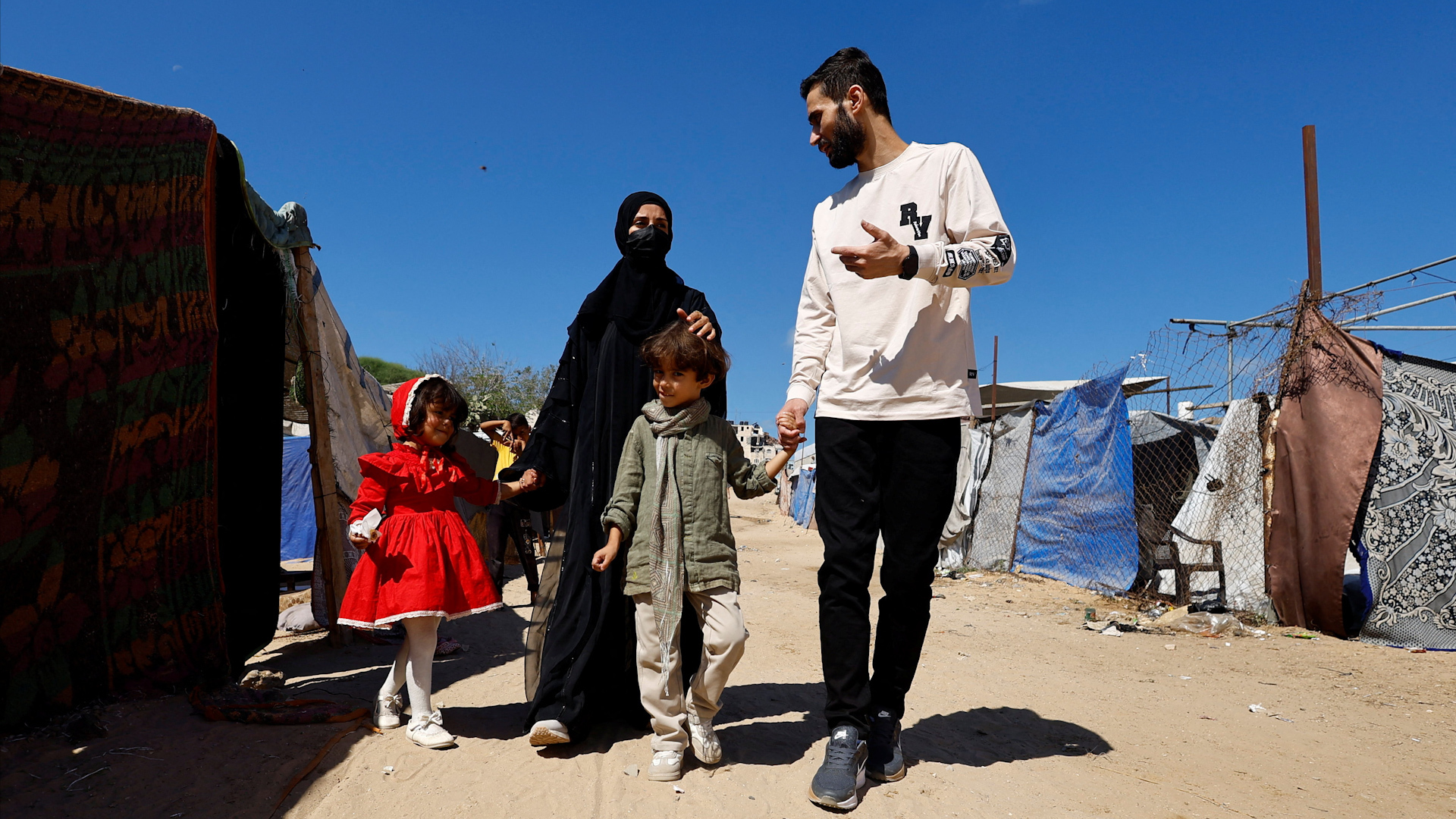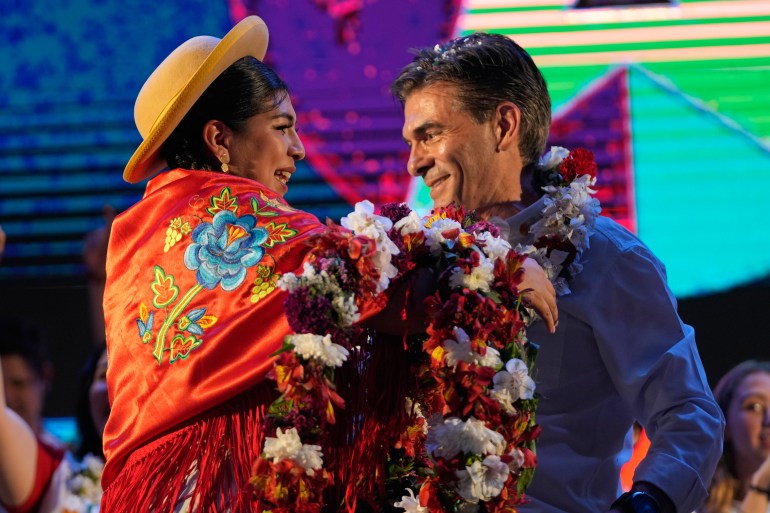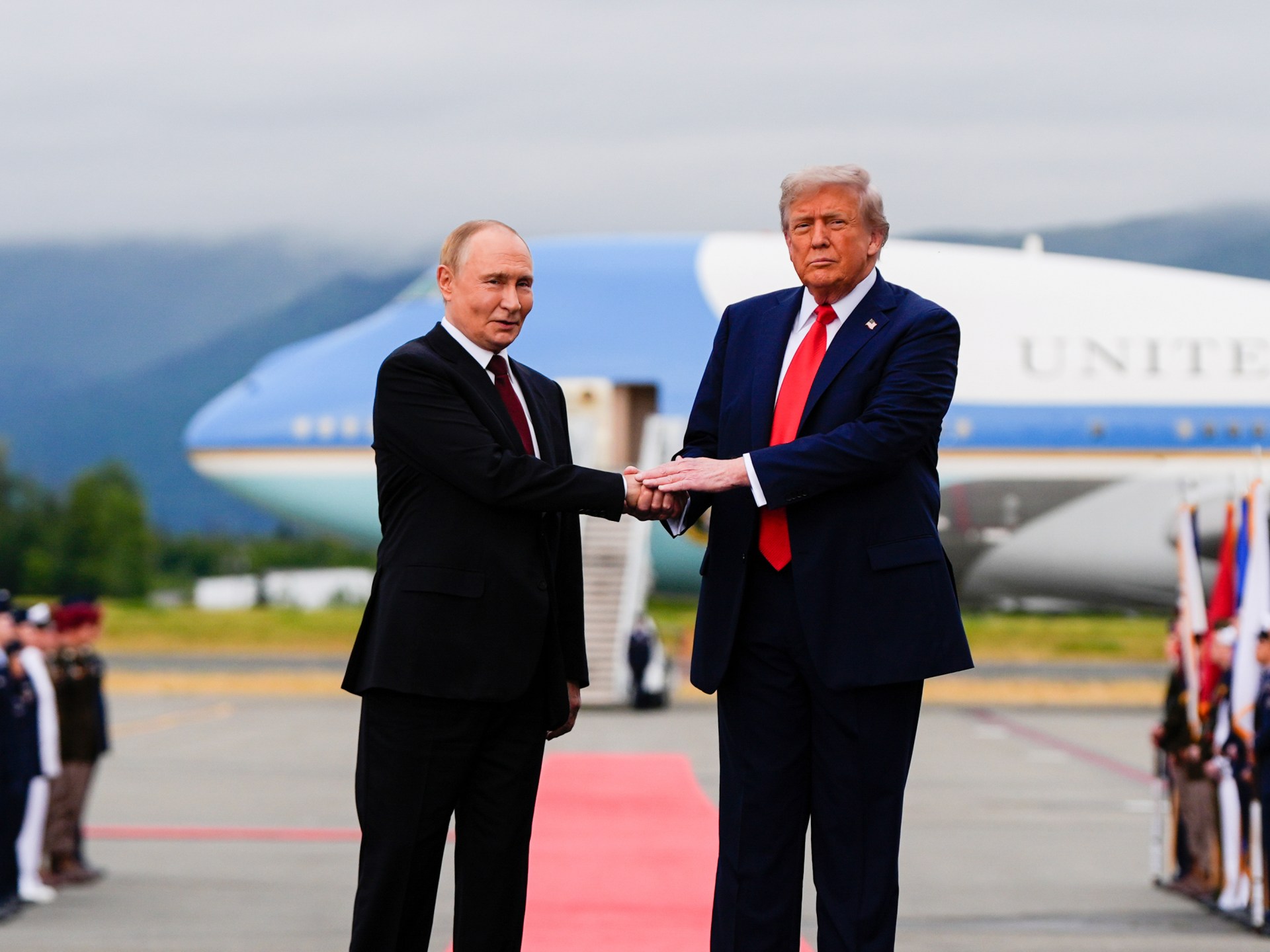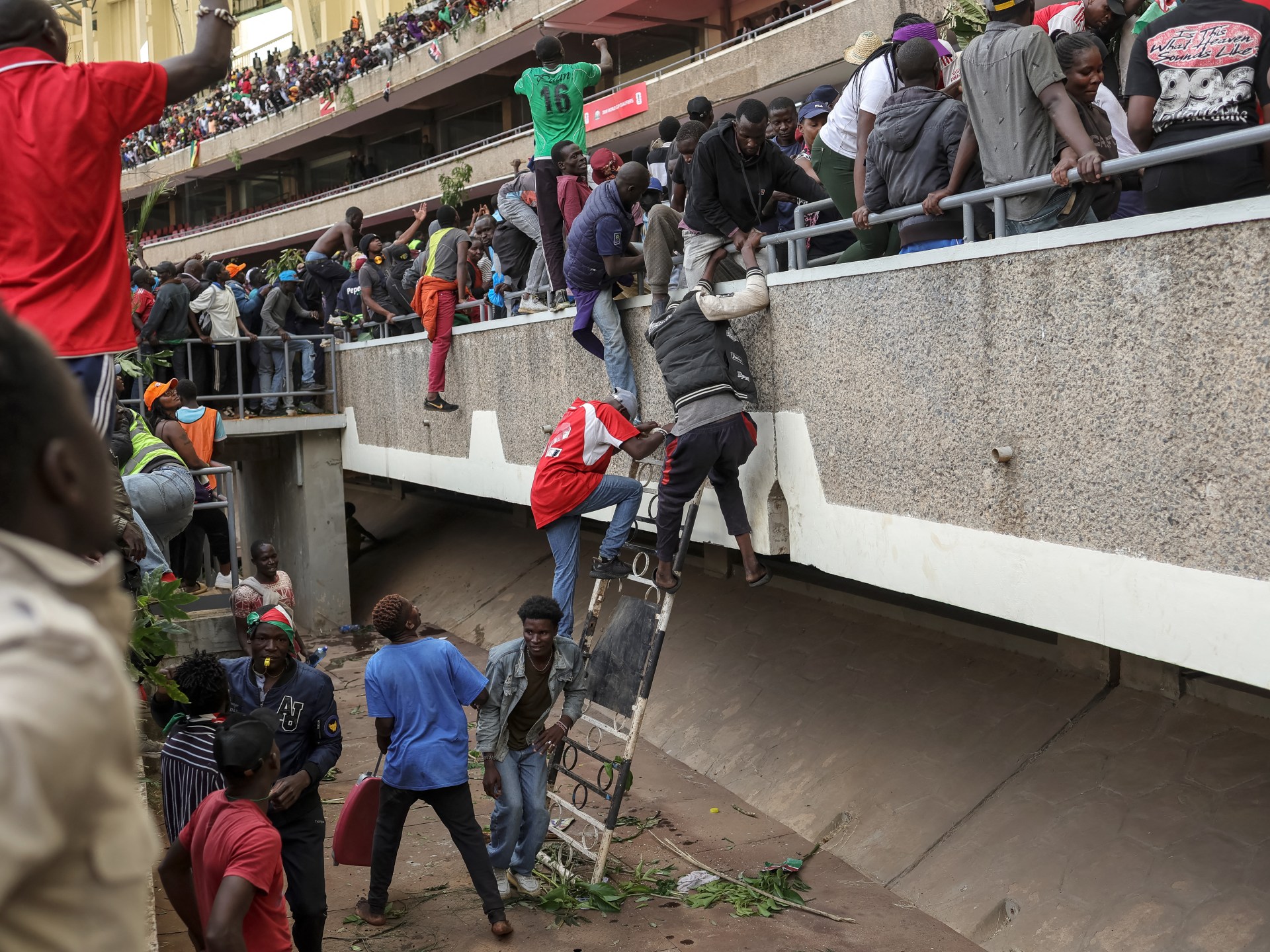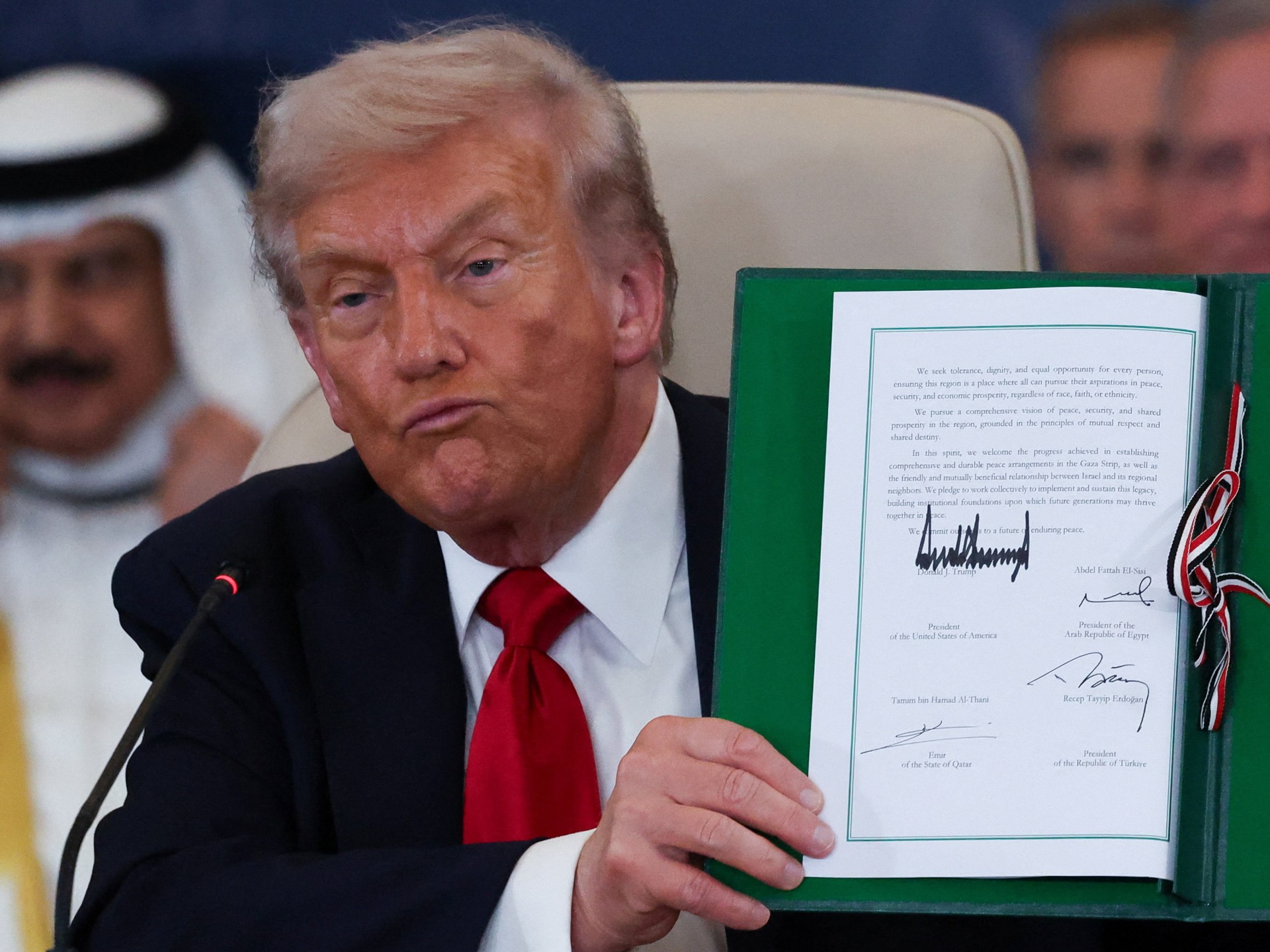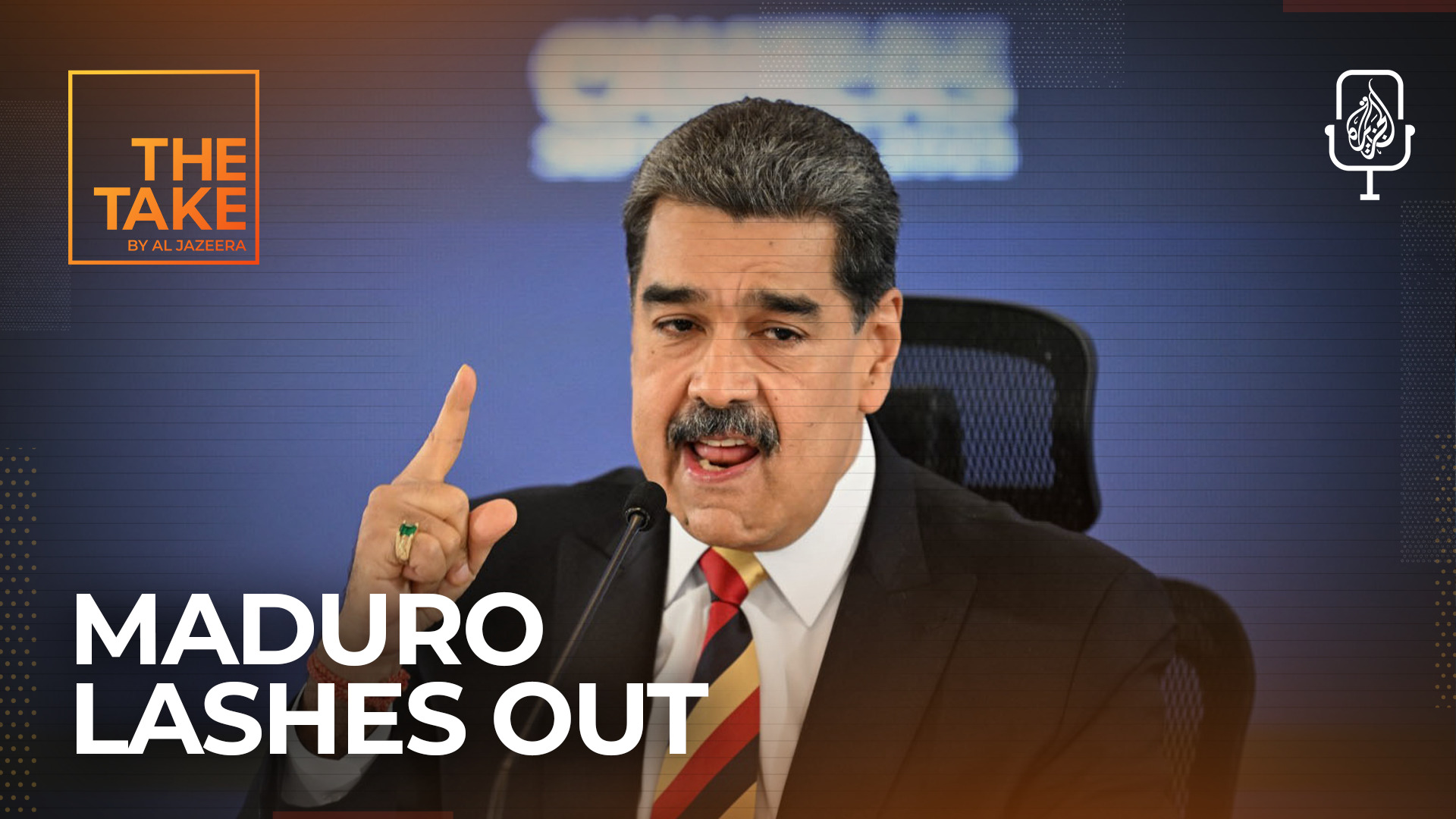US President Donald Trump says he and Russia’s President Vladimir Putin have agreed to meet again for talks on the war in Ukraine.
Trump announced on social media on Thursday that he and Putin would meet in the Hungarian capital Budapest, after the two leaders held a lenghty and productive phone call. A date for the meeting has not been set.
Recommended Stories
list of 3 itemsend of list
The call came a day before Trump is set to meet with President Zelenskyy in Washington, DC, where the Ukrainian leader is expected to resume his appeal to Trump to sell Tomahawk missiles to Ukraine, which could allow it to strike deeper in Russian territory in the two countries’ ongoing war.
In a post on Truth Social, Trump said he would brief Zelenskyy on the Russia talks in the Oval Office tomorrow.
“I believe great progress was made with today’s telephone conversation,” he added.
Trump also said that senior US and Russian officials would meet next week to prepare for another meeting between Putin and Trump, the US leader said.
The call is the first known conversation between the two leaders since they met for a summit in Alaska in August.
The surprise development comes with Zelenskyy preparing to meet Trump at the White House on Friday, as Ukrainian officials seek greater support to fend against aerial attacks and strike back at Russia.
Russian forces continued to bombard Ukraine on Thursday, firing hundreds of drones and dozens of missiles overnight that targeted infrastructure, including energy-related infrastructure.
Eight Ukrainian regions experienced blackouts after the barrage, Ukraine’s national energy operator, Ukrenergo, said on Thursday. DTEK, the country’s largest private energy company, reported outages in the capital, Kyiv, and said it had to stop its natural gas extraction in the central Poltava region due to the strikes.
Natural gas infrastructure was damaged for the sixth time this month, said Naftogaz, Ukraine’s state-owned oil and gas company.
Earlier this week, Russian forces struck a hospital and a United Nations convoy in Ukraine, injuring 57 people and forcing the evacuation of 50 patients.
Kyiv, in turn, has ramped up attacks on Russian targets, including a strike on an oil refinery in the Saratov region.
Ukraine seeks Tomahawks
Zelenskyy has argued that boosting Ukraine’s ability to carry out long-range strikes would help compel Putin to take Trump’s calls for direct negotiations to end the war more seriously.
Tomahawk cruise missiles have a range of around 1,600km (1,000 miles) and would make a strike on Moscow and other major Russian cities possible. While Putin has warned that selling such missiles to Ukraine would be a “whole new level of escalation,” Trump told reporters over the weekend that he’s considering it.
“I might talk to [Putin], I might say, ‘Look, if this war is not going to get settled, I’m going to send them Tomahawks.’ I may say that,” Trump told reporters.
“The Tomahawk is an incredible weapon, very offensive weapon, and honestly, Russia does not need that.”
Trump spoke to reporters en route to Israel over the weekend, where he addressed Israel’s parliament as the ceasefire he helped broker in Gaza took effect. In that speech, Trump signalled the ceasefire deal could lay the groundwork for a truce between Russia and Ukraine, making it clear he’s ready to apply pressure to Putin.
“First we have to get Russia done,” Trump said. “We gotta get that one done.”
Trump and Putin met in Alaska in August to discuss ending Moscow’s war in Ukraine, but left that short summit without a deal.
